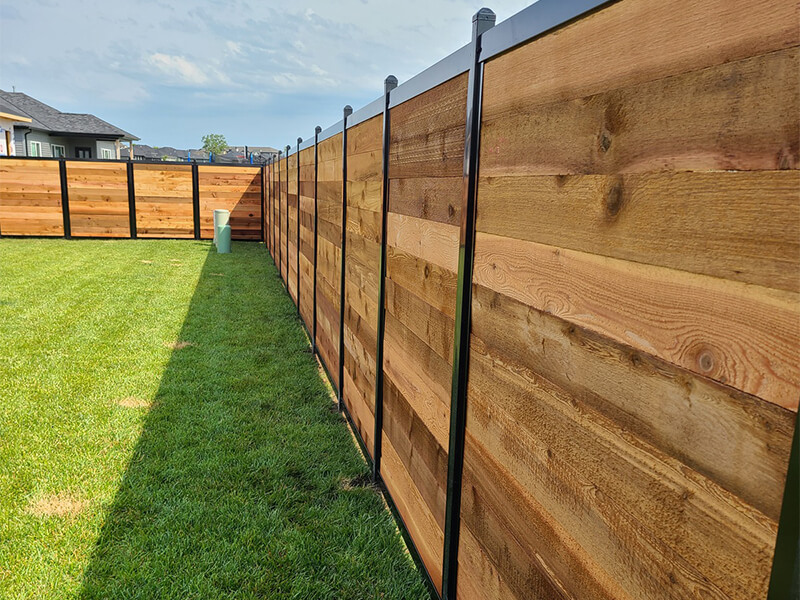Featured
Table of Contents
Sustainable Fencing Choices for Eco-Conscious Property Owners
With growing environmental concerns, many homeowners are looking for sustainable solutions for their property’s fencing needs. One of the key areas to focus on is the type of materials used for fencing. Chemically treated wood fences can harm the environment and require regular upkeep. But there are plenty of eco-friendly fencing alternatives that can help reduce your carbon footprint. Here are some great fencing alternatives for those who want to make an eco-friendly choice for their homes:
Bamboo is a highly renewable material that is perfect for eco-conscious fencing solutions. Known for its rapid growth and renewability, bamboo is an excellent choice for those who want a fence that is both stylish and sustainable. Bamboo is lightweight, durable, and naturally resistant to pests, requiring no toxic chemicals. Bamboo fences also offer a natural aesthetic that complements many landscapes. Bamboo is a completely biodegradable material, which reduces waste at the end of its life.
![]()
With growing environmental concerns, many homeowners are looking for sustainable solutions for their property’s fencing needs. One of the key areas to focus on is the type of materials used for fencing. Chemically treated wood fences can harm the environment and require regular upkeep. But there are plenty of eco-friendly fencing alternatives that can help reduce your carbon footprint. Here are some great fencing alternatives for those who want to make an eco-friendly choice for their homes:
Bamboo is a highly renewable material that is perfect for eco-conscious fencing solutions. Known for its rapid growth and renewability, bamboo is an excellent choice for those who want a fence that is both stylish and sustainable. Bamboo is lightweight, durable, and naturally resistant to pests, requiring no toxic chemicals. Bamboo fences also offer a natural aesthetic that complements many landscapes. Bamboo is a completely biodegradable material, which reduces waste at the end of its life.
2. Plastic Fences Made from Recycled Materials
For those looking for an eco-friendly, low-maintenance fence, recycled plastic is a great option. Made from post-consumer waste, such as plastic bottles and containers, these fences help reduce plastic waste and keep it out of landfills. Recycled plastic fences are incredibly durable, weather-resistant, and don’t require painting or staining. It's a perfect option for those looking to combine sustainability with longevity.
3. Sustainable Fencing with Reclaimed Timber
Repurposing reclaimed wood for your fence reduces the demand for new timber and is a sustainable choice. By repurposing wood from old barns, factories, or other buildings, you are giving the wood a second life and helping to reduce the demand for new timber. Reclaimed wood offers a rustic aesthetic and a sustainable alternative to new timber. Each piece of reclaimed wood has its own story, and using it for fencing adds character and sustainability.4. Natural Living Fencing
Living fences, such as hedgerows, are one of the most natural and sustainable fencing options available. They use plants like ivy, shrubs, and small trees to create a natural barrier around your property. These fences provide privacy, reduce noise, and can improve air quality. In addition to being a low-maintenance and eco-friendly option, living fences contribute to the local ecosystem by providing habitats for wildlife.Conclusion
There are several eco-friendly fencing options available that allow you to minimize your impact on the environment. Whether you choose bamboo, recycled plastic, reclaimed wood, living fences, or composite materials, these eco-friendly choices allow you to have a beautiful and functional fence while still making a positive impact on the planet. Choosing an environmentally friendly fence can help you make a positive impact on both your home and the planet.Table of Contents
Latest Posts
Enhance Your Home's Outside with Weathercraft's Home siding Solutions
Published en
1 min read
Comprehending Roofing Guarantees: What Homeowners Need To Know
Published en
1 min read
Dependable Industrial Roof Covering Providers by Weathercraft
Published en
2 min read
More
Latest Posts
Enhance Your Home's Outside with Weathercraft's Home siding Solutions
Published May 27, 25
1 min read
Comprehending Roofing Guarantees: What Homeowners Need To Know
Published May 22, 25
1 min read
Dependable Industrial Roof Covering Providers by Weathercraft
Published May 22, 25
2 min read